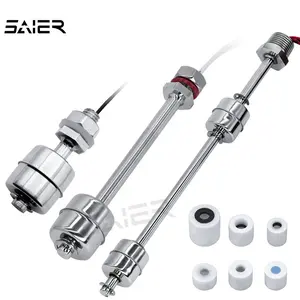Understanding Ball Float Switches
A ball float switch is an integral component in various fluid control systems, providing a reliable means to gauge liquid levels. These switches operate on a simple mechanism where a buoyant ball moves with the liquid level, triggering a switch when a specific level is reached. This introduction aims to elucidate the various aspects of ball float switches, their types, applications, and features.
Types and Materials
Ball float switches come in diverse forms to cater to a broad spectrum of applications. The materials used in their construction, such as plastic, stainless steel, or brass, are selected based on the liquid they will contact. For instance, a stainless steel float switch is often employed in applications requiring corrosion resistance, while plastic variants are used for cost-efficiency and lightweight needs.
Applications and Features
The versatility of a liquid level float switch allows its use in numerous settings, from simple household water tanks to complex industrial systems. Key features to consider include the switch's capacity to withstand different temperatures, pressures, and chemical exposures. The adaptability of a mini float switch makes it suitable for confined spaces, highlighting the importance of selecting the appropriate size for specific applications.
Accuracy and Precision
Accuracy is paramount when selecting a water level float switch. Devices with a high degree of precision ensure efficient and reliable system operations. Manufacturers typically provide specifications regarding the accuracy of these switches, which can be critical for applications where precision is non-negotiable.
Selection Considerations
Choosing the right ball float switch involves assessing the device's compatibility with the intended application. Factors such as the switch's buoyancy, switching angle, and mounting options play a significant role in its performance. Additionally, the ease of reading measurements and understanding the switch's operation should be considered to ensure seamless integration into the existing system.
Conclusion
In conclusion, a ball float switch is a versatile and essential tool for monitoring and controlling liquid levels in various systems. When selecting the appropriate switch, it is crucial to consider the type, material, application, and features that align with the specific requirements of the task at hand. Alibaba.com presents a comprehensive collection of ball float switches to accommodate the diverse needs of buyers across industries.






























 浙公网安备 33010002000092号
浙公网安备 33010002000092号 浙B2-20120091-4
浙B2-20120091-4